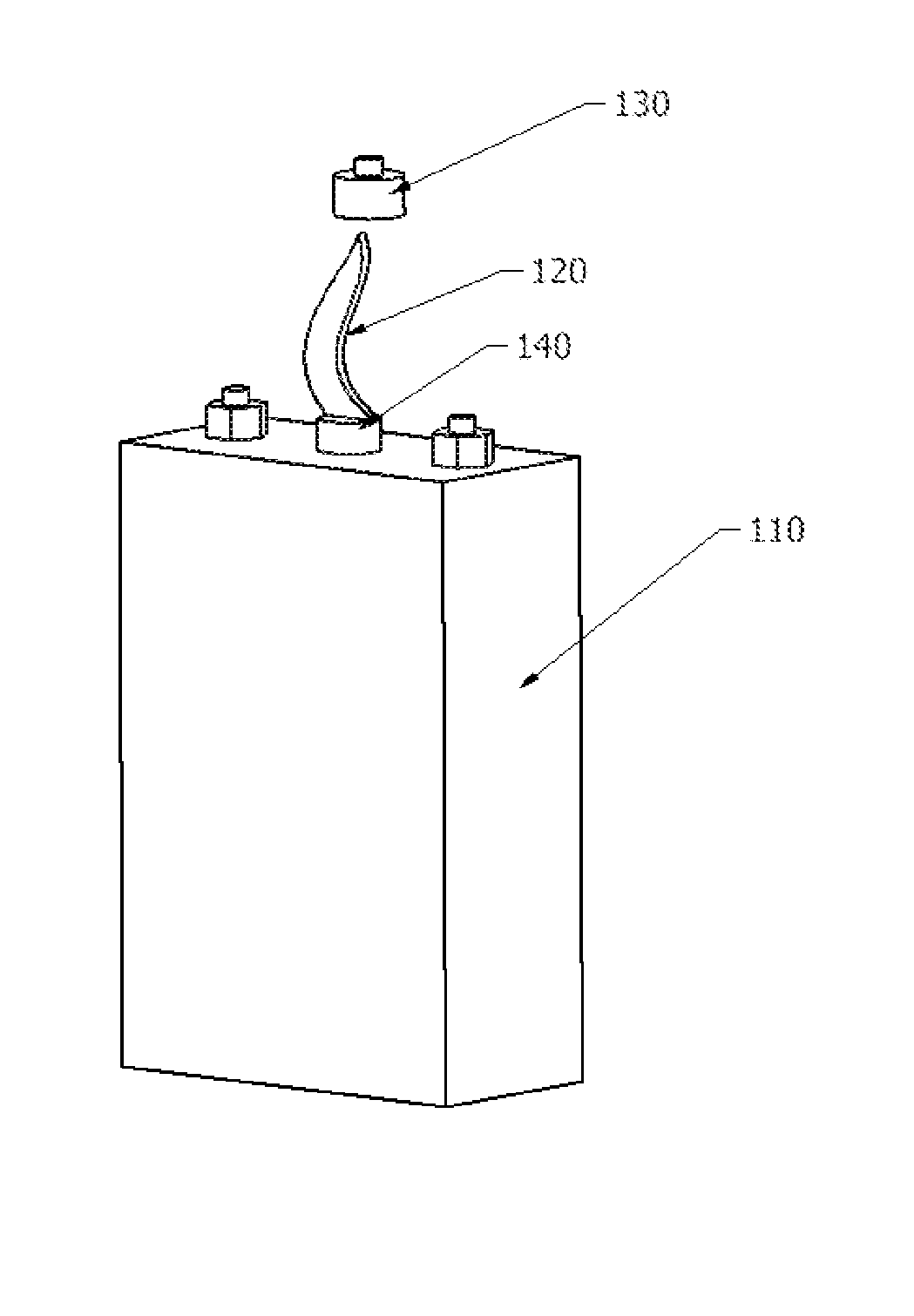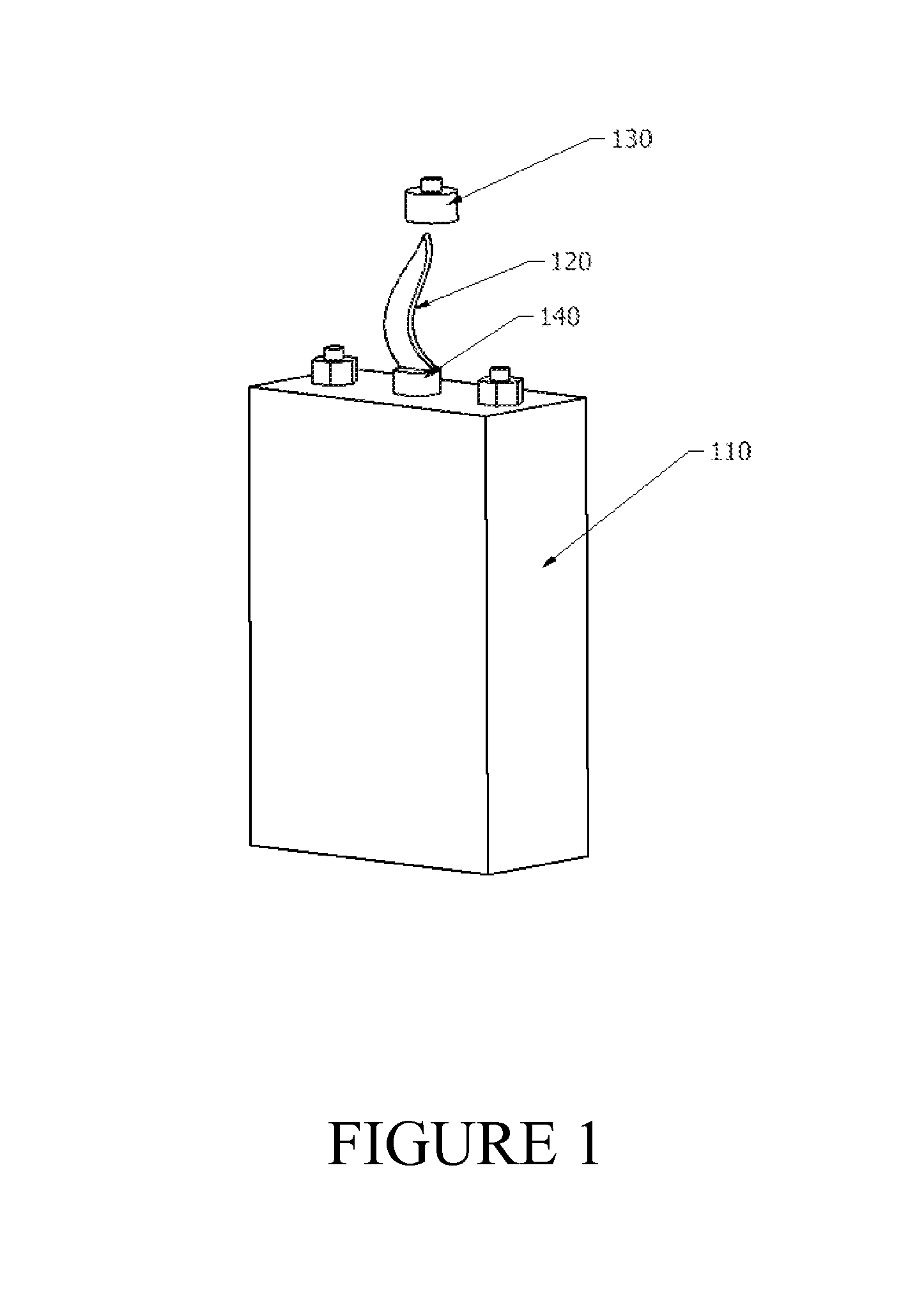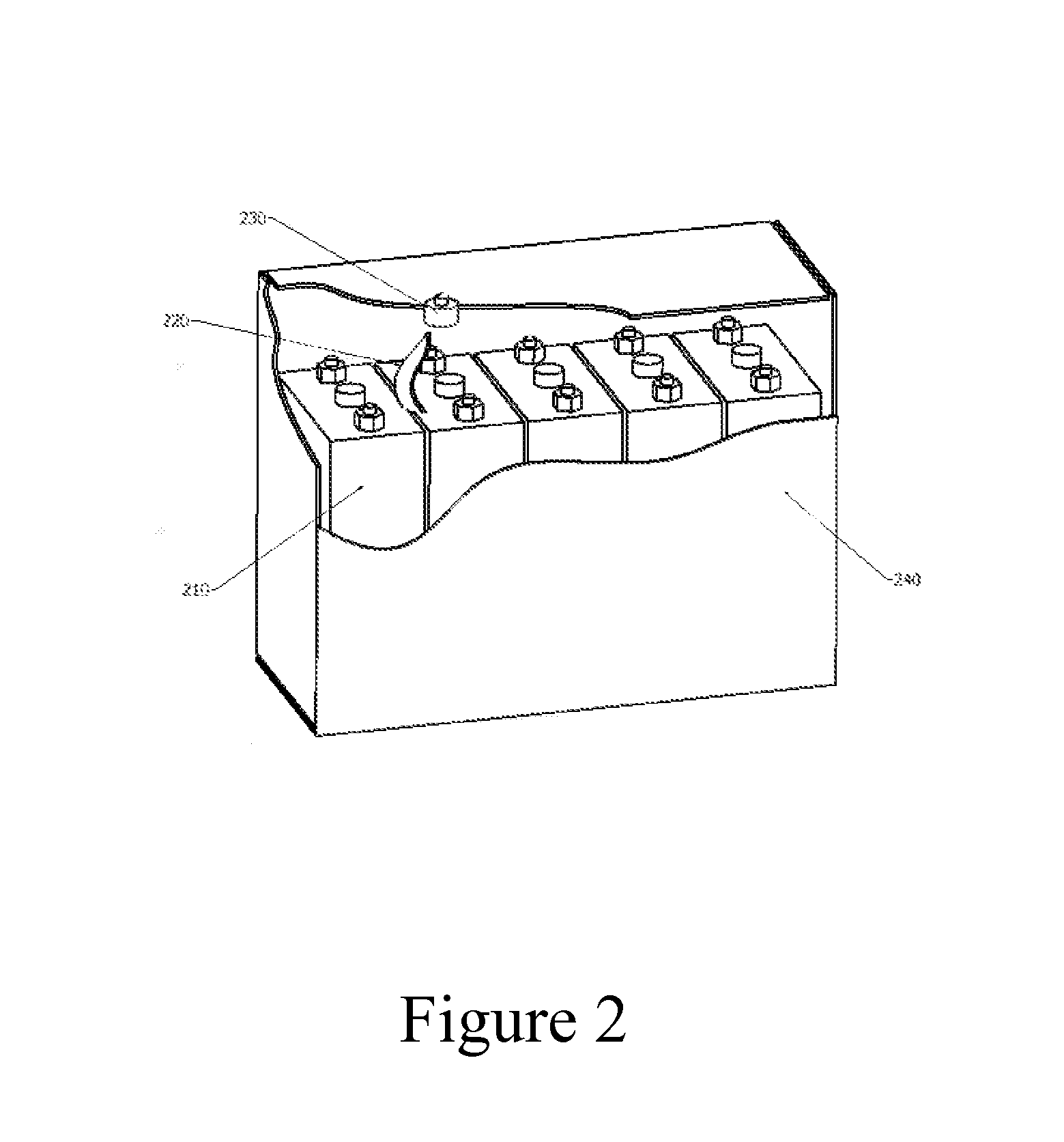Method of detecting lithium-ion cell damage via vapor detection
a technology of lithium-ion batteries and vapor detection, which is applied in the field of lithium-ion batteries, can solve the problems of li-ion batteries that are not designed for venting, li-ion batteries are extremely fragile in terms of electrical discharge and recharge, and lithium itself is an extremely reactive element, so as to reduce, limit, and stop the entire charging or discharging of a battery or cell
- Summary
- Abstract
- Description
- Claims
- Application Information
AI Technical Summary
Benefits of technology
Problems solved by technology
Method used
Image
Examples
Embodiment Construction
[0074]FIG. 1 is a perspective view of a single lithium-ion cell showing the cell, a characteristic or exemplary vapor plume and a sensor for vapor detection. Li-ion battery cell 110 is shown emitting organic vapor 120, depicted as a plume and which can be detected by organic vapor detector / sensor 130, which is provided in close proximity to the cell 110. Vent 140 is shown as many li-ion batteries have such a vent, however, it should be clearly understood that the invention actually works even with those batteries which are not vented and the invention is not limited by the presence or absence of a vent.
[0075]FIG. 2 is a partially cut-away perspective view of a battery showing several cells, one of which emits vapor, and a sensor disposed so as to detect vapor within the battery. In this preferred embodiment and best mode presently contemplated, group of cells 210 (prismatic) have a member which is degrading and is emitting vapor 220. Note that regardless of the location or identity ...
PUM
| Property | Measurement | Unit |
|---|---|---|
| time | aaaaa | aaaaa |
| size | aaaaa | aaaaa |
| electrical power | aaaaa | aaaaa |
Abstract
Description
Claims
Application Information
 Login to View More
Login to View More - R&D
- Intellectual Property
- Life Sciences
- Materials
- Tech Scout
- Unparalleled Data Quality
- Higher Quality Content
- 60% Fewer Hallucinations
Browse by: Latest US Patents, China's latest patents, Technical Efficacy Thesaurus, Application Domain, Technology Topic, Popular Technical Reports.
© 2025 PatSnap. All rights reserved.Legal|Privacy policy|Modern Slavery Act Transparency Statement|Sitemap|About US| Contact US: help@patsnap.com



